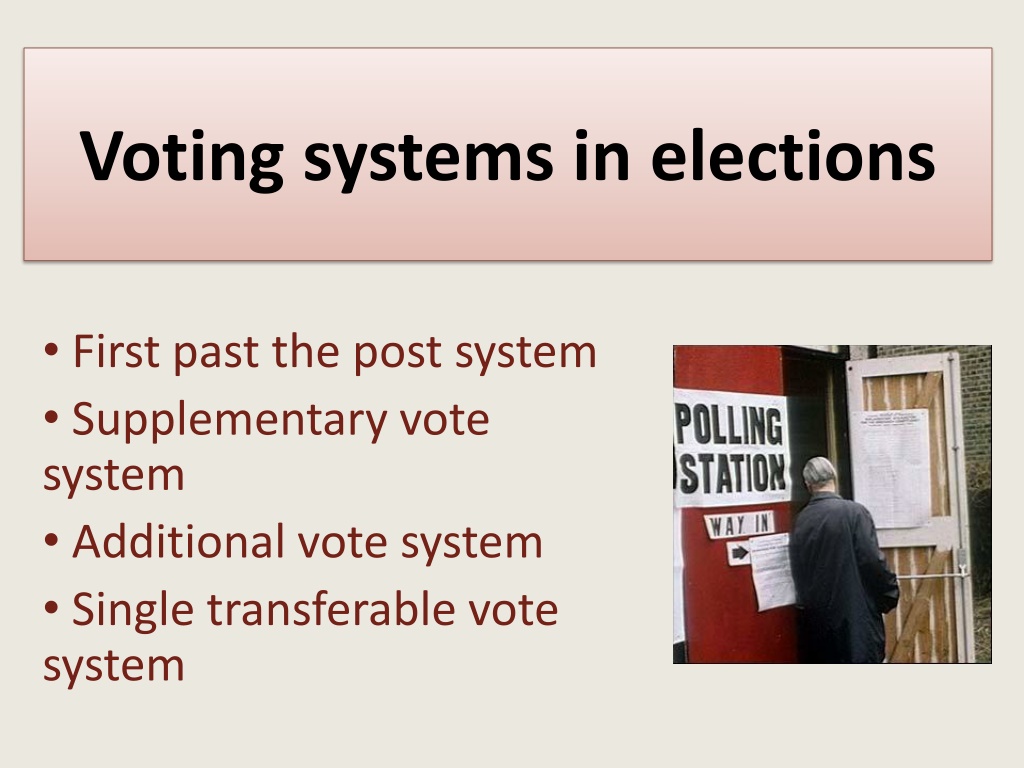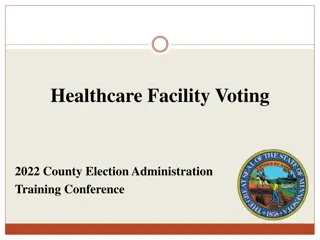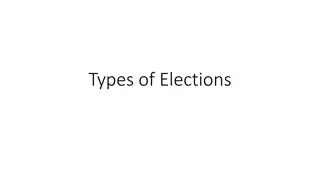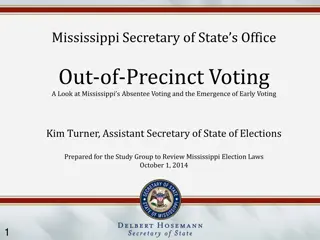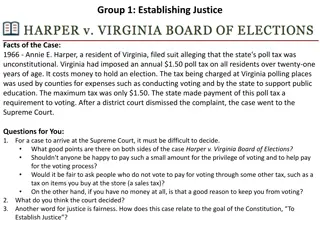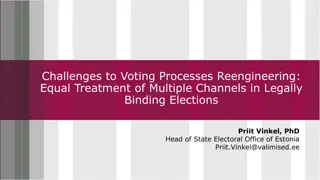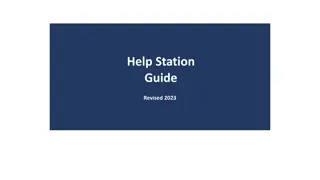Overview of Voting Systems in Elections
Explore different voting systems in elections including First-past-the-post, Supplementary Vote, Additional Vote, and Proportional Representation, highlighting their advantages and disadvantages. Understand how these systems impact the electoral process and representation of different parties. Images included for better visualization.
Download Presentation

Please find below an Image/Link to download the presentation.
The content on the website is provided AS IS for your information and personal use only. It may not be sold, licensed, or shared on other websites without obtaining consent from the author. Download presentation by click this link. If you encounter any issues during the download, it is possible that the publisher has removed the file from their server.
E N D
Presentation Transcript
Voting systems in elections First past the post system Supplementary vote system Additional vote system Single transferable vote system
First-past-the-post system Used in elections for the House of Commons 1 seat per constituency Voters cast one vote for the candidate of their choice The candidate with the largest number of votes is elected
First past the post system Advantages Close tie between MP and constituency Tends to produce a majority for the party that gains most seats Produces more stable governments with little need for coalitions Disadvantages Many seats are safe seats where many voters may feel their votes are wasted . Proportion of candidates for a party elected is not in proportion to votes cast A government can gain a large majority of seats even though it only gained a minority of votes nationally Smaller parties tend to go unrepresented
Proportional representation Opponents of first-past-the-post claim that some kind of system of proportional representation (PR) would be fairer PR systems aim to ensure that the number of candidates elected for a party is in proportion to the number of votes cast. This tends to give a better chance to smaller parties eg the Green Party.
Supplementary vote (SV) system Used for electing Mayor of London Used for elections where there is only one person to be elected Voters indicate first and second choice candidates If a candidate receives a majority of first choices then he/she is elected If not, then all candidates apart from top two are eliminated and second choice votes redistributed to remaining candidates
Supplementary vote (SV) system Advantage A candidate cannot be elected who although achieving the largest number of votes is unpopular with the majority of voters Disadvantage This system would not necessarily produce proportional representation if it were used for a whole parliament or assembly
Additional vote (AV+) system Used to elect members of the European Parliament, the Scottish Parliament, the Welsh Assembly and the Greater London Assembly Voters vote twice - first for a list of candidates who they list in order of preference, they then also vote for a party. If a candidate gains a majority he/she is elected if not the second choices of the bottom candidate are transferred to other candidates. This is repeated until one candidate has a majority The second set of votes for the parties are then used to assess how a number of remaining top up seats are allocated to ensure that each party ends up with seats in proportion to the votes they have received.
Additional vote (AV+) system Example of ballot paper for the Scottish Parliament
Additional vote (AV+) system Advantages Tends to produce a legislature where seats held by parties are in proportion to votes cast Most of those elected are still linked to a constituency Smaller parties which fail to get elected in a constituency can still achieve representation via top up seats Disadvantages Candidates elected in top up seats are not linked to a particular constituency More likelihood of coalition governments
Single transferable vote (STV) system Constituencies are usually multi-member typically 3-5 seats Voters number candidates in order of preference Counting votes in this system is a complex process whereby the votes of candidates who have achieved a quota and been elected as well as those of candidates with too few votes are transferred to other candidates until all seats have been filled This system is not currently used in any UK elections
Single transferable vote (STV) system Advantages Tends to produce proportional representation better than most other systems Allows voters to vote for more than one candidate eg may not want to cast all votes for one party Disadvantages Complex system to administer Constituencies are large so link between representatives and voters less close
